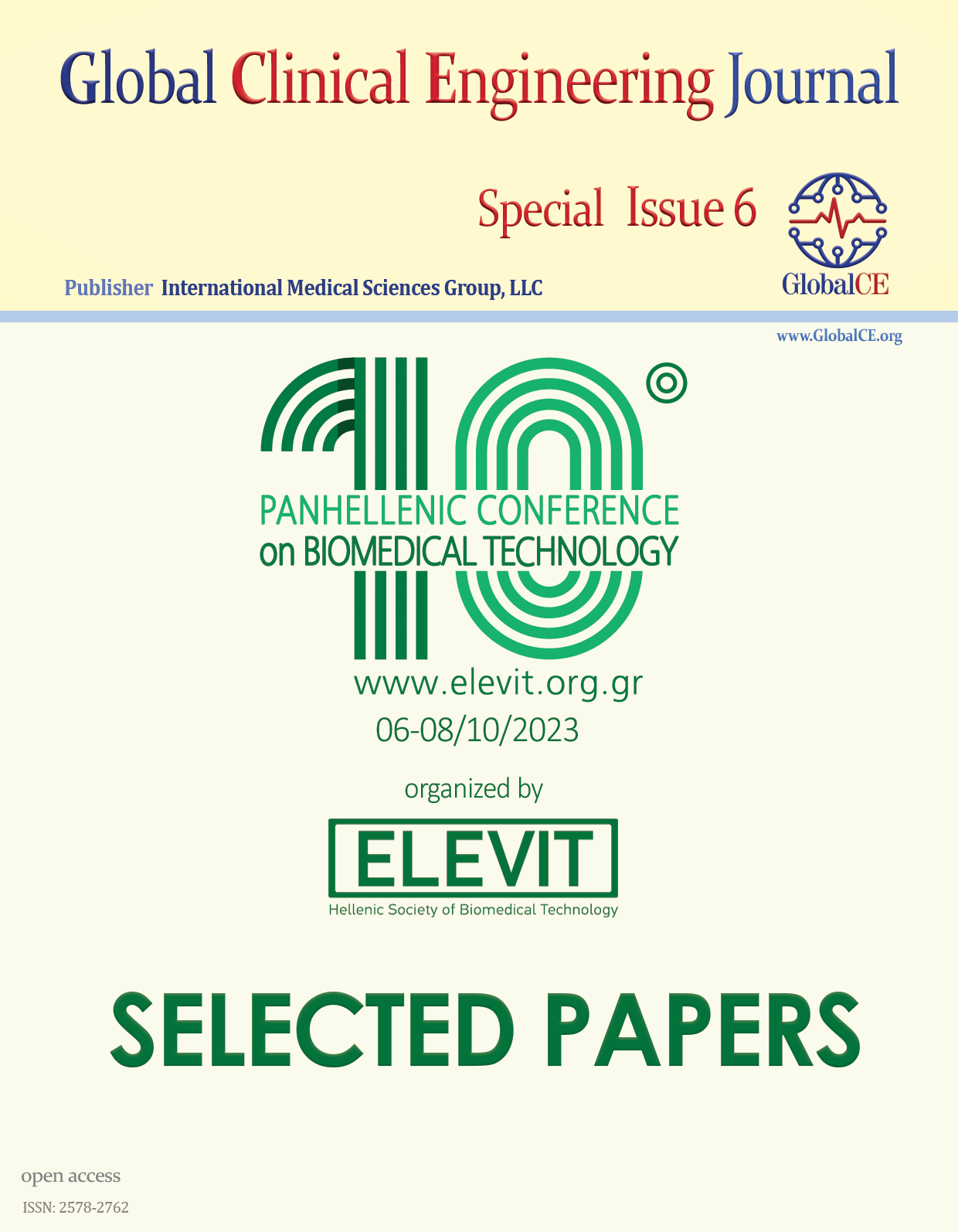A Novel Dermatological Diagnosis Support Device Based on Electrical Impedance Spectroscopy (DermaSense)
Main Article Content
Keywords
medical devices, dermatology, electrical impedance spectroscopy, EIS, actinic keratosis, melanoma, biomedical engineering
Abstract
Our team has engineered a mobile and cost-efficient diagnostic tool that leverages Electrical Impedance Spectroscopy (EIS) technology to conduct differential assessment of the electrical impedance of skin tissue. Now in its third prototype iteration, the DermaSense apparatus performs non-invasive data collection from the epidermal layer, processing and analyzes the data, and serves as a support tool in dermatological diagnostic decisions. Device development focuses on an array of skin malignancies and relevant precursors conditions, such as actinic keratosis. Subsequent to rigorous evaluations in both controlled lab environments and clinical scenarios, our empirical data suggests that DermaSense holds promise in enhancing the precision of skin condition classification. Crucially, impedance measurements derived from individuals with certain pre existing dermatological ailments appear to be distinguishable from those acquired from healthy patches of skin from the same subject, as well as those from other healthy subjects.
Downloads
Abstract 391 | PDF Downloads 40
References
[2] A. G. Kelbore, P. Owiti, A. J. Reid, E. A. Bogino, L. Wondewosen, and B. K. Dessu, “Pattern of skin diseases in children attending a dermatology clinic in a referral hospital in Wolaita Sodo, southern Ethiopia,” BMC dermatology, vol. 19, pp. 1–8, 2019.
[3] U. Blume-Peytavi et al., “Dermatology today and tomorrow: from symptom control to targeted therapy,” J Eur Acad Dermatol Venereol, vol. 33, pp. 3– 36, Jan. 2019, doi: 10.1111/jdv.15335.
[4] V. Piccolo, “Update on dermoscopy and infectious skin diseases,” Dermatology Practical & Conceptual, vol. 10, no. 1, 2020.
[5] G. H. Litchman, R. W. Teplitz, J. W. Marson, and D. S. Rigel, “Impact of electrical impedance spectroscopy on dermatologists’ number needed to biopsy metric and biopsy decisions for pigmented skin lesions,” Journal of the American Academy of Dermatology, vol. 85, no. 4, pp. 976–979, Oct. 2021, doi: 10.1016/j.jaad.2020.09.011.
[6] A. Lackermeier, A. Pirke, E. T. McAdams, and J. Jossinet, “Non-linearity of the skin’s AC impedance,” in Proceedings of 18th Annual International Conference of the IEEE Engineering in Medicine and Biology Society, Amsterdam, Netherlands: IEEE, 1997, pp. 1945–1946. doi: 10.1109/IEMBS.1996.646332.
[7] M. Kukucka and Z. Krajcuskova, “The Frequency and the Shape of Driving Signal Influence in Measurement of the Active Points,” AEEE, vol. 10, no. 3, pp. 181–186, Sep. 2012, doi:
10.15598/aeee.v10i3.641.
[8] T. Han, S. Kundu, A. Nag, and Y. Xu, “3D Printed Sensors for Biomedical Applications: A Review,” Sensors, vol. 19, no. 7, Art. no. 7, Jan. 2019, doi: 10.3390/s19071706.
[9] X. Du‐Harpur, F. M. Watt, N. M. Luscombe, and M. D. Lynch, “What is AI? Applications of artificial intelligence to dermatology,” British Journal of Dermatology, vol. 183, no. 3, pp. 423–430, 2020.
[10] D. T. Hogarty et al., “Artificial intelligence in dermatology—where we are and the way to the future: a review,” American Journal of Clinical Dermatology, vol. 21, pp. 41–47, 2020.
[11] G. H. Litchman, J. W. Marson, R. M. Svoboda, and D. S. Rigel, “Integrating electrical impedance spectroscopy into clinical decisions for pigmented skin lesions improves diagnostic accuracy: a multitiered study,” SKIN The Journal of Cutaneous Medicine, vol. 4, no. 5, pp. 424–430, 2020.






